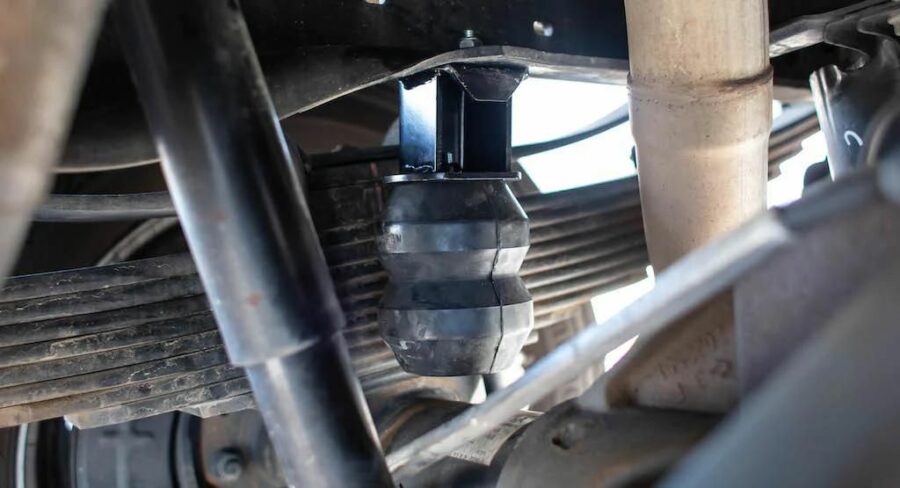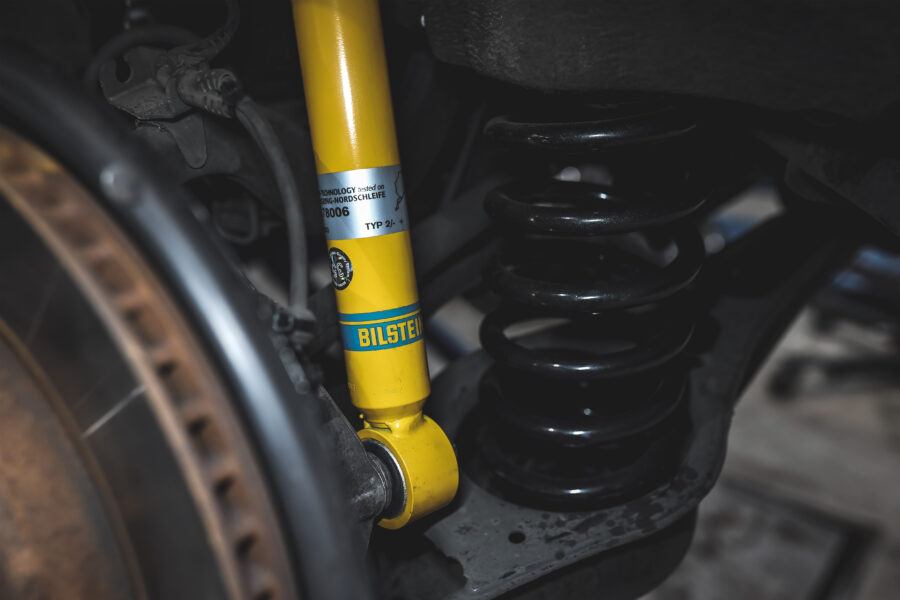Cars consist of dozens of different systems, each working together to bring a balance of performance, comfort and safety. A central role is that of the suspension. It carries the weight of the chassis and engine, absorbs road imperfections, and allows for a more tolerable ride, with decent comfort levels across varied conditions. The suspension also makes braking, accelerating and turning possible, and maximises tyre contact with the road to improve stability and control.
Different setups can be seen in different vehicles, but what’s common in each is that individual parts and the system as a whole can be upgraded to suit driver and passenger needs. Want a slammed look to the car paired with a more sporty ride? Consider coilovers. Or tired of every pothole and speed bump? Have a look at systems riding on air bellows. The good news is that there are varied aftermarket car suspension setups that improve overall handling. When paired with other upgrades, like brake pads with more bite, or components that improve chassis rigidity, you’ll also benefit from increased safety.
Why Consider Air Suspension?

Traditional suspension systems revolve around the mutual work of shock absorbers and mechanical springs, sitting on ball joints and connected to the rest of the car with control arms. Where air suspension differs is that it swaps the springs with pressurised airbags. These improve how the vehicle absorbs bumps, but also allow the car to be lowered and lifted as needed. The system has been a staple part of heavier vehicles, particularly at rear axles where they deal with weight distribution.
Newer iterations include some serious tech. Besides airbags in the form of two stacked tyres, air suspension can also include calibrated shocks that take into account vehicle weight and performance parameters. Ride height and pressure sensors streamline how wheels interact with the road, and keep the car level.
Throw in some seriously capable management systems that do all the complicated math and adjust the pressure in the bellows. The combo seriously improves both handling, with the ability to lower the car for higher speeds to reduce drag and increase stability and grip through the tyres, or lift the vehicle for more cabin comfort while dealing with less-than-perfect roads.
Luxury car makers are adopting the tech at breakneck speeds, even featuring air suspension as standard gear in lower trims. The system is also basic equipment in SUVs and 4WDs, and helps with off-roading tasks. Aftermarket systems can be easily retrofitted to almost any vehicle. Look for setups configured for your car, and from established suspension specialists to enjoy better handling, more comfort, less parts wear and a system that just works.
What About Coilovers?

Until air suspension came to rule the roost, coilovers were the go-to solution for lowering the car and getting more control in turns and at higher speeds. They’re essentially pre-assembled suspension components, consisting of both a spring and shock in the same unit.
The compression rates, or how the car deals with bumps, can be increased to firm up the ride, and restrict the rebound rates in the shocks. This substantially increases control, delivers more feel through the steering and glues the tyres to the road. Compared to separate springs and shocks, coilovers make for a faster, safer car that’s more fun to drive. The only trade-off is comfort.
The setup hails from racing, but reduced prices have meant that enthusiasts can also enjoy the benefits. There’s the choice of non-adjustable OEM strut and coil and spring setups with fixed lengths, basic slip kits that only lower the car, or full-bodied types either in a mono-tube or dual-tube configuration. Go for mono-tubes if you’re after the real deal, as these provide more stable damping force, deal better with heat, and also mean a firmer ride.
For track use, this is the aftermarket car suspension setup to get. If, however, you want better street performance, choose dual-tube coilovers. They have a longer stroke, absorb more of the bumps, and tend to last longer. As with air suspension, there are respected brands, that have done thorough testing, and deliver products in a tiered system (with varying performance) to meet different driver needs and vehicle requirements.
How About Lowering Springs?

Lowering springs provide most of the benefits of air suspension and coilovers, including better handling and road feel, more traction, and a lower centre of gravity for increased stability. They do as advertised, and get the car lower to the ground. This can be anywhere from 5 to 62.5mm, with most having a progressive spring design that makes them stiffer as the loads act on the car and speeds increase.
And they do more in terms of looks, giving your car a slammed look, and getting rid of embarrassing gaps in wheel arches. They do however have a few compromises. You’ll still be using the stock shocks, so rebound rates might not be perfect, and there’s the possibility of bottoming out and causing more tyre and parts wear. On the whole, though, lowering springs are a less costly alternative to air suspension and coilovers, are quicker to install, and still get most if not all of the fun that comes with more expensive suspension upgrades.



